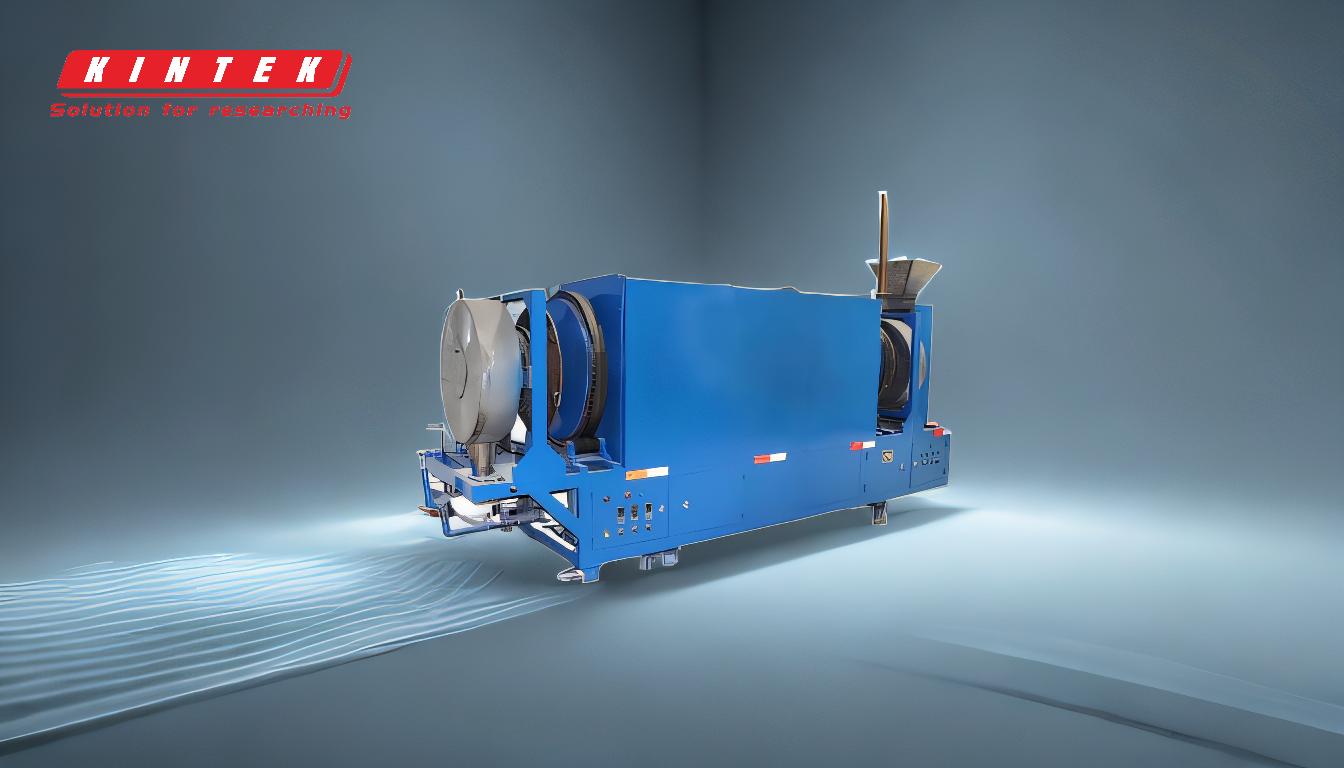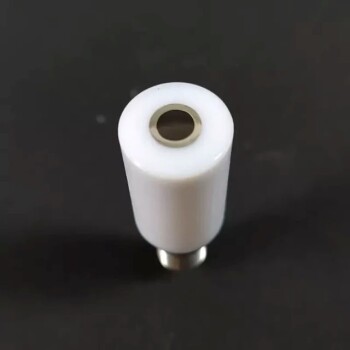Pyrolysis is a thermal decomposition process that converts waste into valuable energy products by heating it to high temperatures in an oxygen-free environment. This process breaks down complex materials like plastics, tires, and biomass into three primary outputs: a liquid fuel known as bio-oil, a combustible gas called syngas, and a solid carbon-rich residue called bio-char.
At its core, pyrolysis is not incineration. It is a controlled chemical transformation that uses intense heat in an oxygen-starved chamber to deconstruct waste at a molecular level, converting it back into stable, energy-rich components.
A Step-by-Step Breakdown of the Pyrolysis Process
The pyrolysis process can be understood as a sequence of distinct stages, each designed to carefully control the transformation of waste into new products.
Stage 1: Feedstock Preparation
Before thermal treatment, the raw waste material (feedstock) must be prepared. This involves sorting to remove non-pyrolyzable materials and impurities.
The feedstock is then often shredded or ground into smaller, more uniform pieces. This increases the surface area, ensuring that heat is distributed evenly and the material breaks down efficiently inside the reactor.
Stage 2: The Pyrolysis Reactor
The prepared feedstock is loaded into a sealed chamber called a pyrolysis reactor. Crucially, all oxygen is removed from this chamber.
Heating the material in the absence of oxygen is the defining characteristic of pyrolysis. It prevents combustion (burning) and instead forces the chemical bonds within the waste material to break apart.
Stage 3: Thermal Decomposition
Inside the reactor, the feedstock is heated to temperatures typically ranging from 200°C to 900°C (390°F to 1650°F).
This intense heat causes the long, complex molecules (like the polymers in plastic) to vaporize and crack into smaller, more volatile molecules. This creates a hot mixture of gases and vapors.
Stage 4: Product Separation and Collection
The hot vapor stream is directed out of the reactor and into a condensing system. As it cools, the condensable portions turn into a liquid known as bio-oil or pyrolysis oil.
The remaining gases that do not condense are collected separately as syngas. The solid material left behind in the reactor at the end of the process is the bio-char.
The Three Core Products of Pyrolysis
The value of pyrolysis comes from its ability to turn a single waste stream into multiple useful outputs.
Bio-oil (Pyrolysis Oil)
This dark, viscous liquid is chemically similar to crude oil. It can be refined further to produce commercial-grade fuels like diesel, or it can be used directly in furnaces and boilers to generate heat.
Syngas (Synthesis Gas)
This is a mixture of combustible gases, primarily hydrogen and carbon monoxide. Syngas has a significant energy value and is often used on-site to power the pyrolysis plant itself, reducing external energy needs and improving the overall efficiency of the operation.
Bio-char
This stable, solid material is rich in carbon. It is not simply ash; it is a valuable co-product. It can be used as a soil amendment to improve soil fertility and water retention, or it can be processed into activated carbon for use in filtration systems.
Understanding the Trade-offs and Key Variables
Successfully implementing pyrolysis requires a clear understanding of its operational sensitivities and limitations.
The Critical Role of Temperature
The final ratio of oil, gas, and char is not fixed. It is heavily influenced by the reactor temperature and heating rate. Higher temperatures tend to favor the production of syngas, while lower temperatures often yield more bio-char.
Feedstock Consistency is Essential
The process is highly sensitive to the type and purity of the waste used. Contaminants like certain plastics (e.g., PVC) or excessive moisture can reduce the quality of the fuel produced and create corrosive byproducts that damage equipment.
Energy Balance and Net Gain
Pyrolysis is an energy-intensive process that requires a significant thermal input to start. While the syngas produced can offset a large portion of this energy cost, the net energy gain depends entirely on the plant's efficiency, the scale of the operation, and the specific energy content of the feedstock.
Making the Right Choice for Your Goal
Evaluating pyrolysis depends on your primary objective.
- If your primary focus is liquid fuel production: You must prioritize a consistent, high-quality feedstock like sorted plastics and optimize for mid-range temperatures to maximize bio-oil yield.
- If your primary focus is waste volume reduction: Pyrolysis is extremely effective, converting the bulk of materials like scrap tires and non-recyclable plastics into useful products with minimal residue.
- If your primary focus is carbon sequestration or soil improvement: Operating at lower temperatures to maximize the output of stable bio-char is the most effective strategy.
Ultimately, pyrolysis provides a sophisticated pathway to redefine waste as a valuable resource for a more circular economy.
Summary Table:
| Stage | Process | Key Outputs |
|---|---|---|
| 1. Feedstock Preparation | Sorting, shredding, and drying waste material | Uniform, prepared feedstock |
| 2. Pyrolysis Reactor | Heating in an oxygen-free chamber (200°C–900°C) | Vaporized gases and solid residue |
| 3. Product Separation | Condensing vapors and collecting gases | Bio-oil, syngas, and bio-char |
| 4. Final Products | Refining and utilization | Liquid fuel, energy gas, soil amendment |
Ready to turn your waste streams into valuable energy? KINTEK specializes in high-quality lab equipment and consumables for pyrolysis research and development. Whether you're optimizing bio-oil yield or scaling up syngas production, our solutions help you achieve precise temperature control and efficient material processing. Contact us today to explore how our expertise can support your pyrolysis projects and drive your sustainability goals forward!
Related Products
- Electric Rotary Kiln Small Rotary Furnace Biomass Pyrolysis Plant
- Customizable High Pressure Reactors for Advanced Scientific and Industrial Applications
- Chemical Vapor Deposition CVD Equipment System Chamber Slide PECVD Tube Furnace with Liquid Gasifier PECVD Machine
- VHP Sterilization Equipment Hydrogen Peroxide H2O2 Space Sterilizer
- Non Consumable Vacuum Arc Induction Melting Furnace
People Also Ask
- What are the raw materials for biochar production? Choose the Right Feedstock for Your Goals
- What is pyrolysis technology for biomass energy? Unlock Bio-Oil, Biochar, and Syngas from Waste
- How is energy converted into biomass? Harnessing Nature's Solar Power for Renewable Energy
- What biomass is used in pyrolysis? Selecting the Optimal Feedstock for Your Goals
- What are the steps of biomass pyrolysis? Turn Waste into Biochar, Bio-Oil & Biogas




















